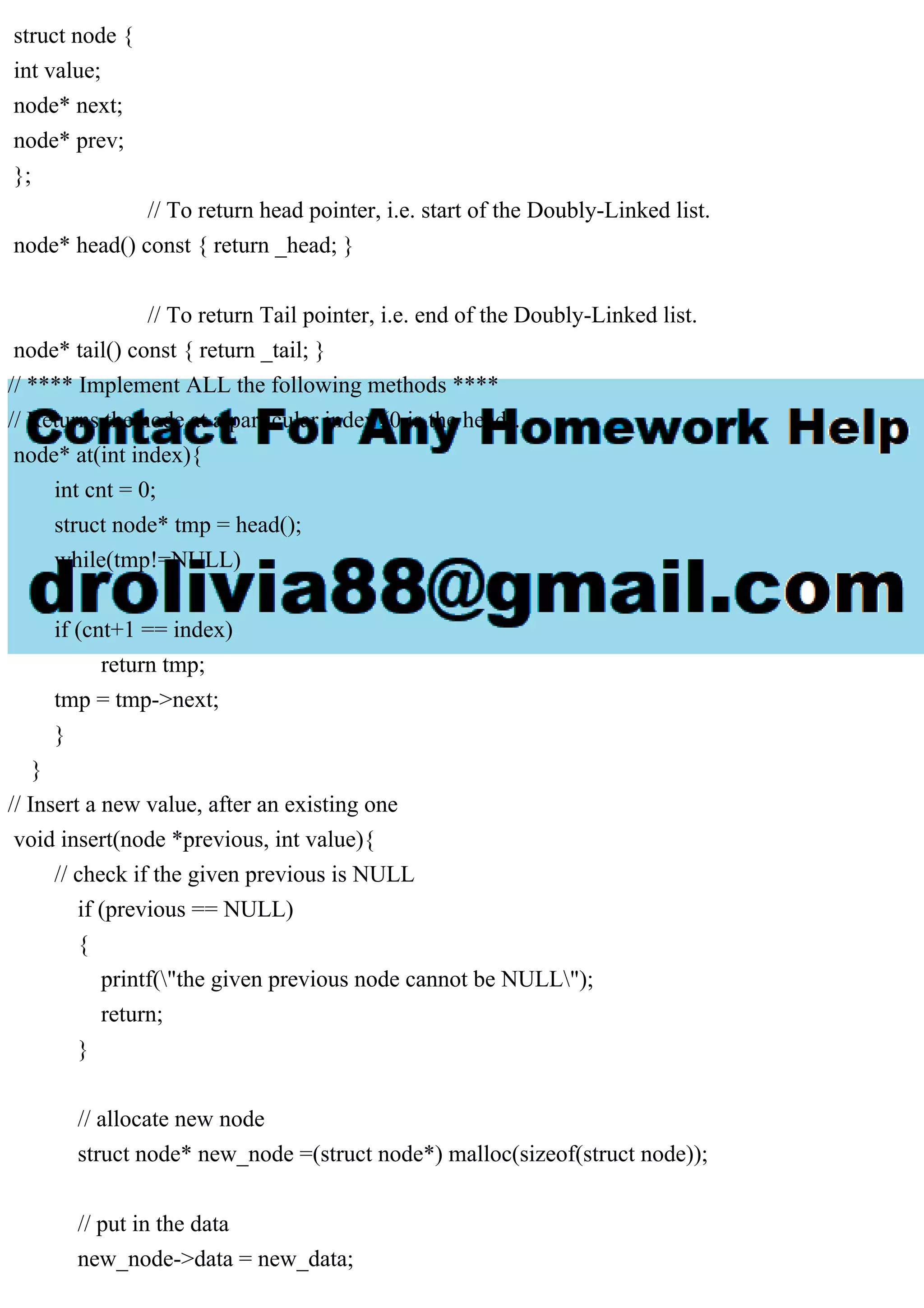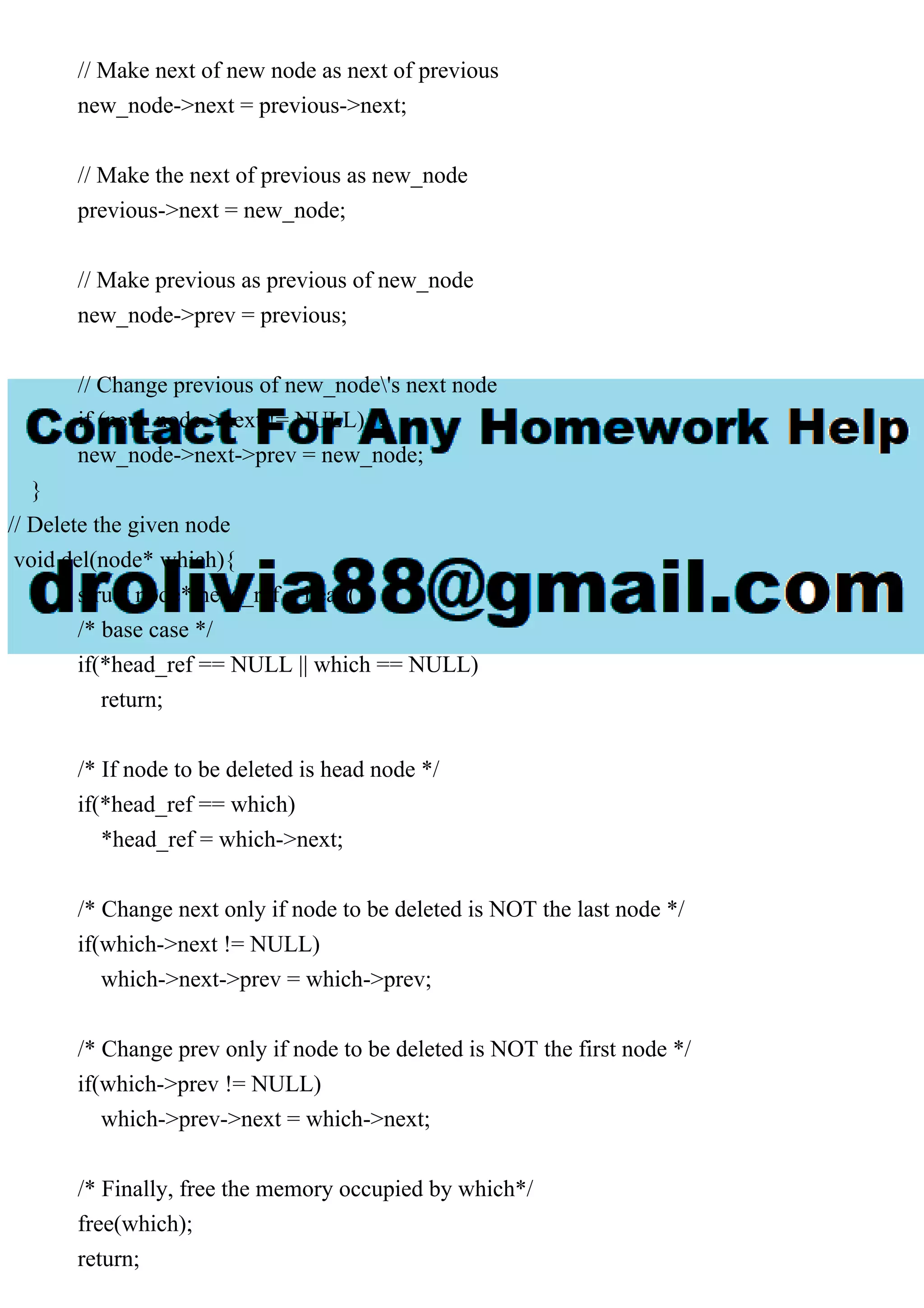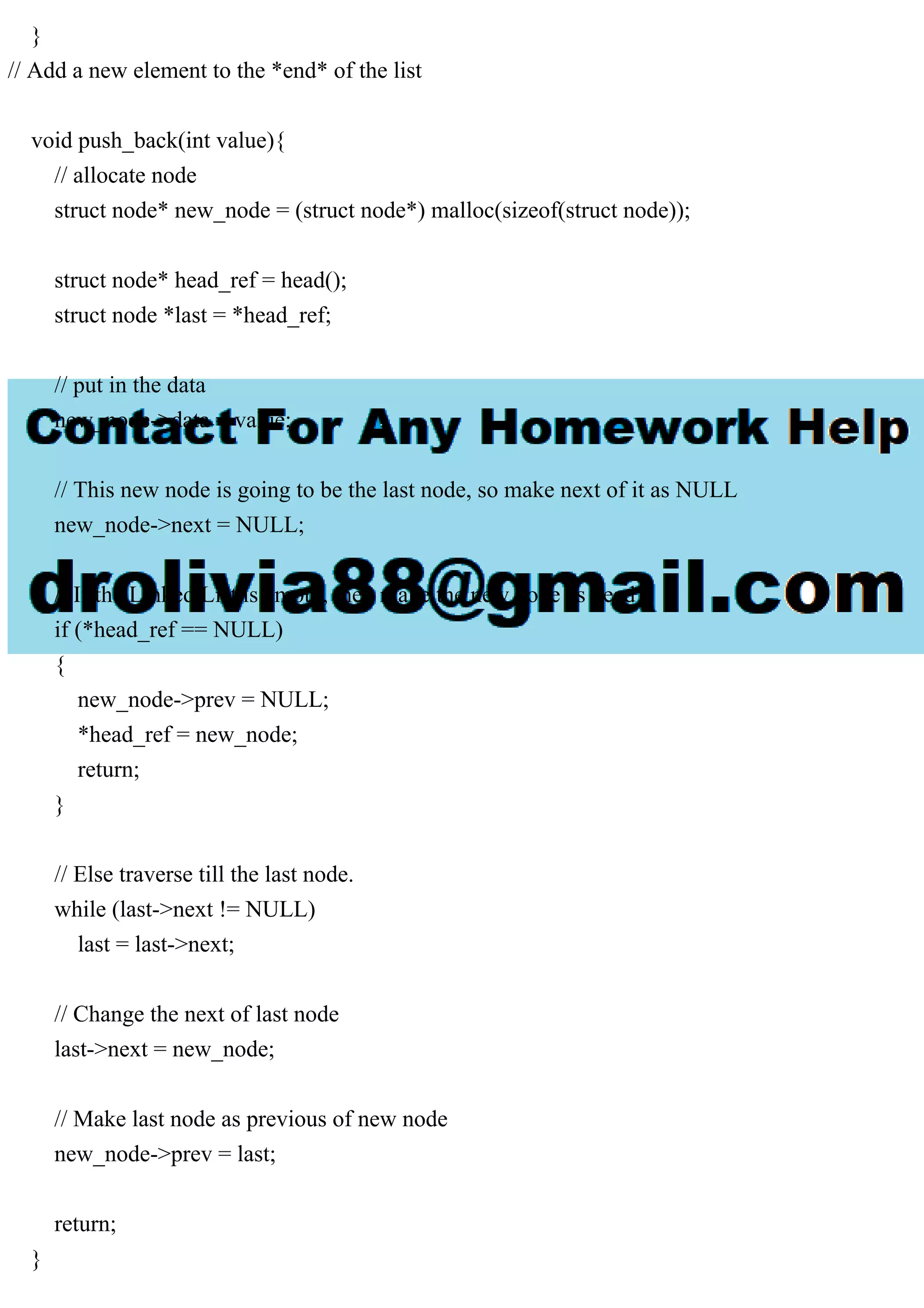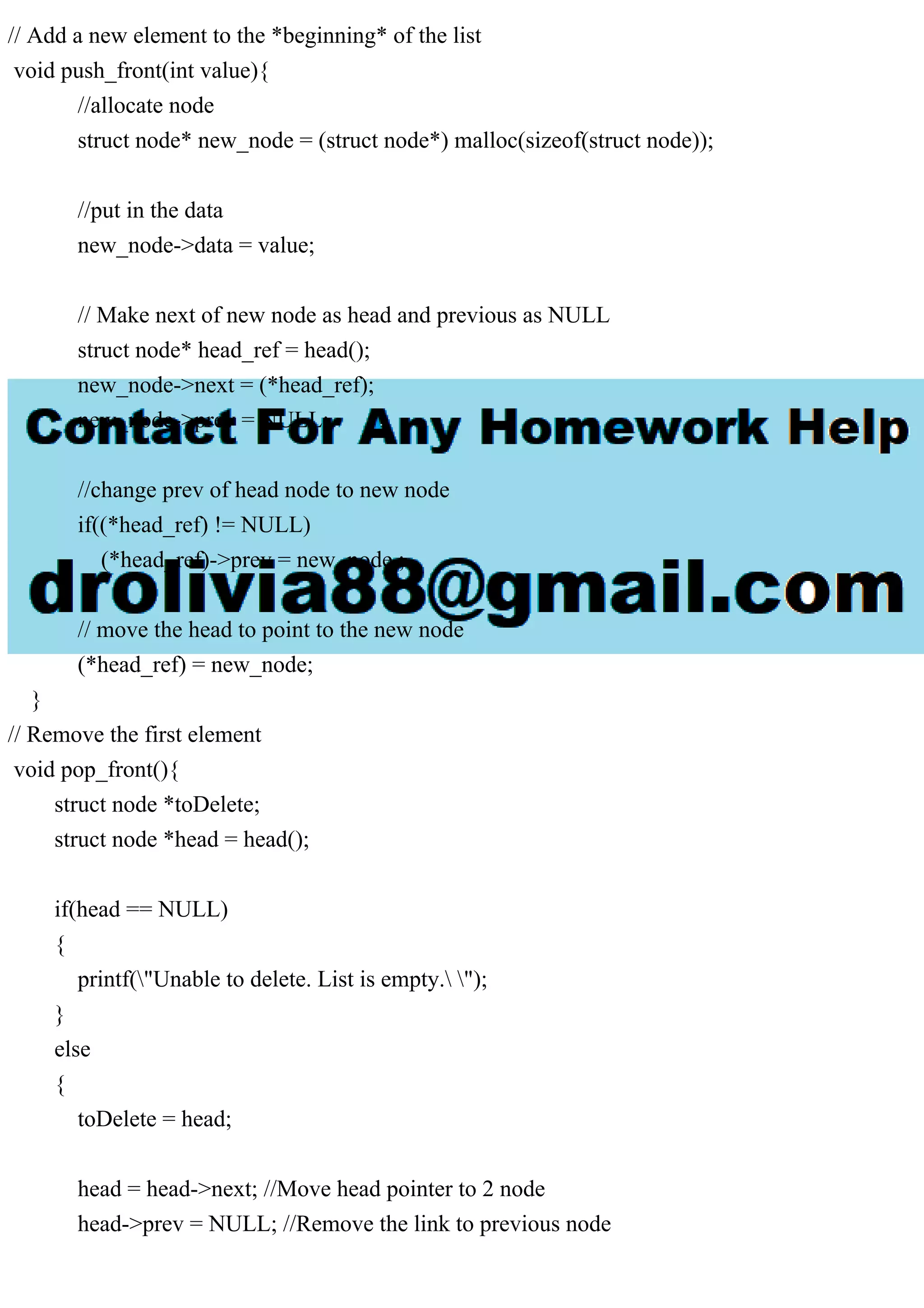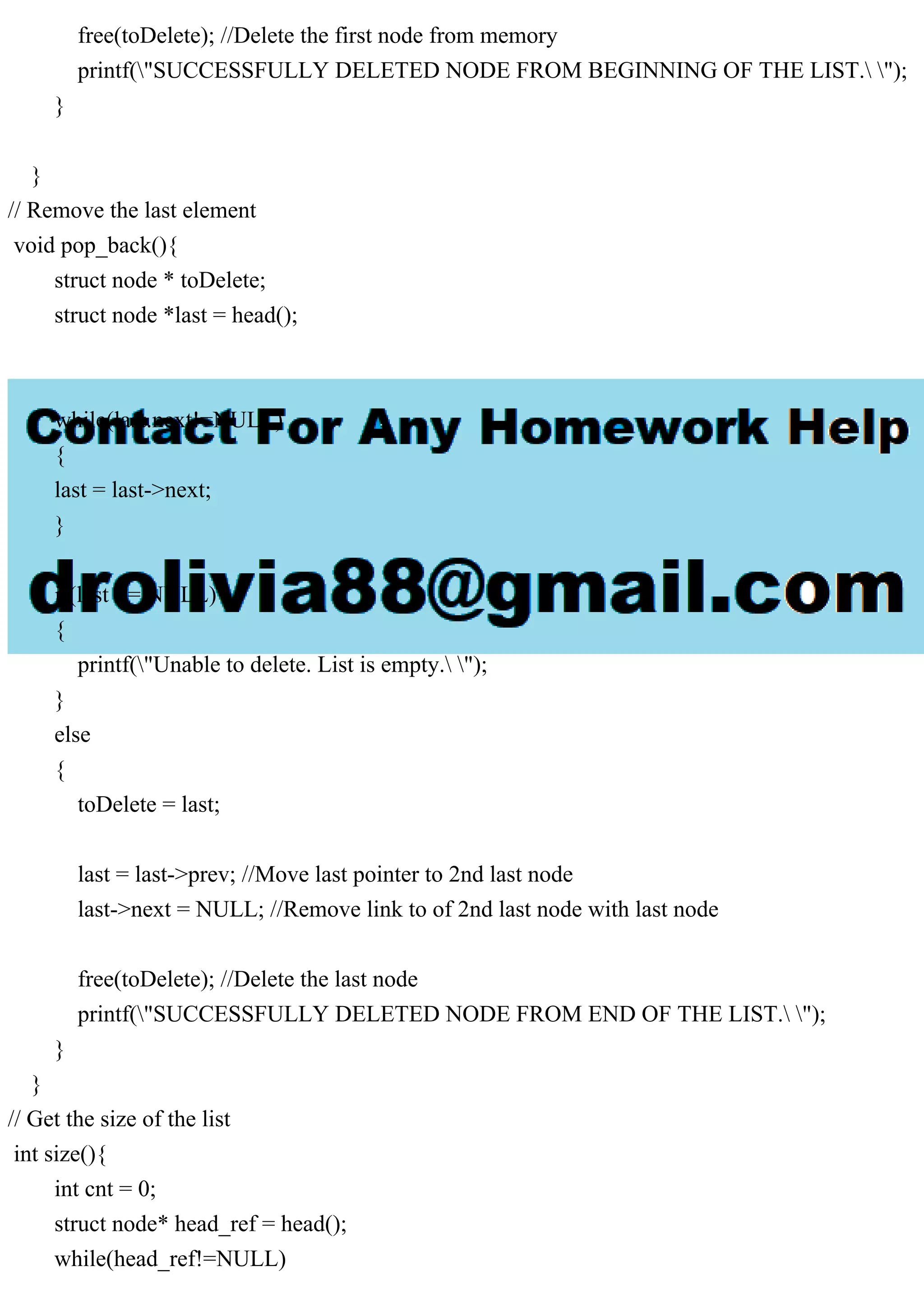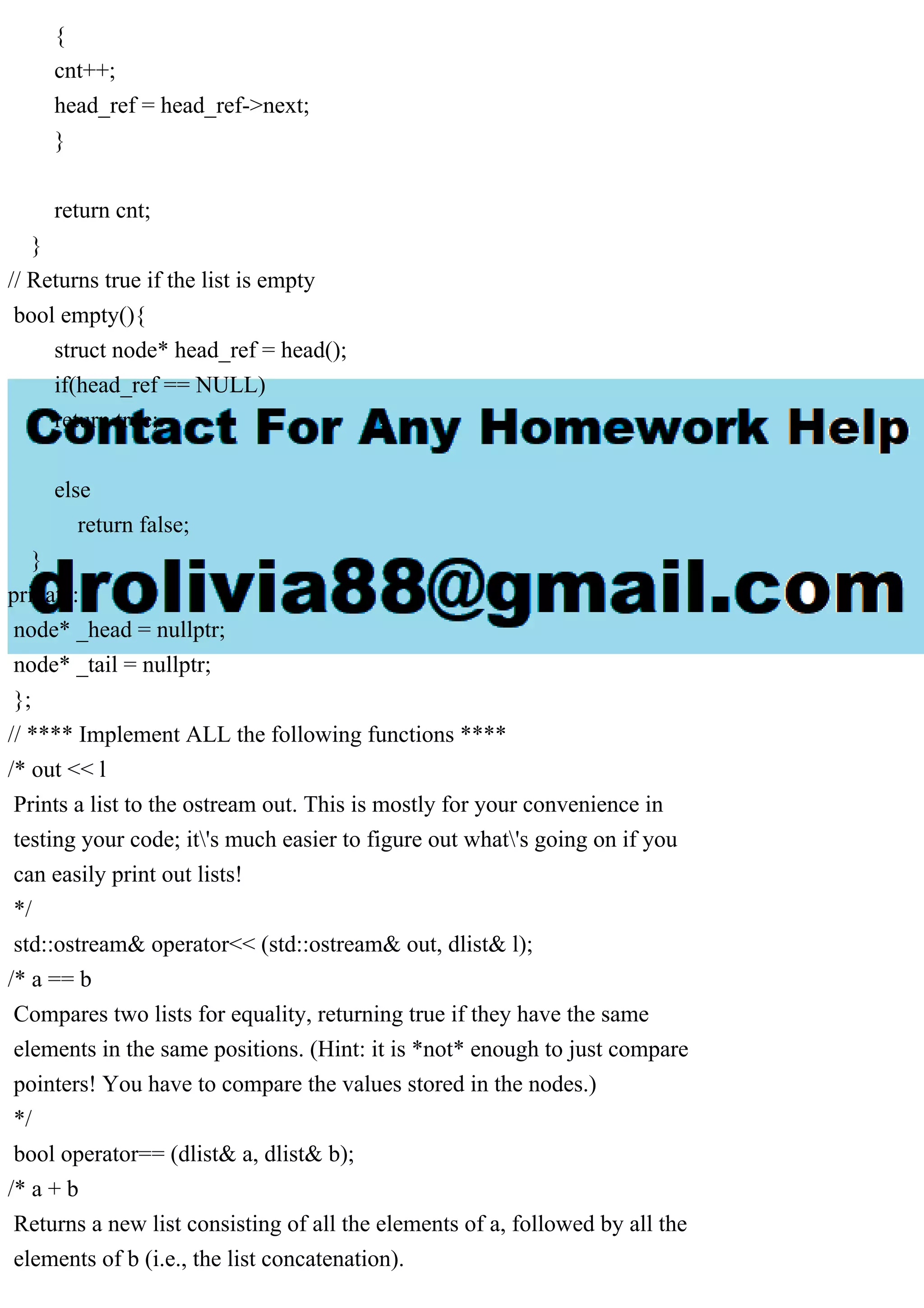The document outlines the implementation of a doubly-linked list in C++, focusing on the structure, operations, and methods associated with this data structure, such as inserting and deleting nodes. It begins by explaining what data structures are and why different types are necessary for data management. Various functions to manipulate the list, such as adding and removing elements, are also discussed in detail.
![Data Structures in C++
I am really new to C++, so links are really hard topic for me. It would be nice if you can provide
explanations of what doubly linked lists are and of some of you steps... Thank you
In this assignment, you will implement a doubly-linked list class, together with some list
operations. To make things easier, you’ll implement a list of int, rather than a template class.
Solution
A variable helps us to identify the data. For ex: int a = 5; Here 5 is identified through variable a.
Now, if we have collection of integers, we need some representation to identify them. We call it
array. For ex: int arr[5]
This array is nothing but a Data Structure.
So, a Data Structure is a way to group the data.
There are many Data Structures available like Arrays, Linked List, Doubly-Linked list, Stack,
Queue, etc.
Doubly-Linked list are the ones where you can traverse from the current node both in left and
right directions.
Why so many different types of Data Structures are required ?
Answer is very simple, grouping of data, storage of data and accessing the data is different.
For example, in case of Arrays we store all the data in contiguous locations.
What if we are not able to store the data in contiguous locations because we have huge data.
Answer is go for Linked List/Doubly-Linked list.
Here we can store the data anywhere and link the data through pointers.
I will try to provide comments for the code you have given. May be this can help you.
#pragma once
/*
dlist.h
Doubly-linked lists of ints
*/
#include
class dlist {
public:
dlist() { }
// Here we are creating a NODE, it has a integer value and two pointers.
// One pointer is to move to next node and other to go back to previous node.](https://image.slidesharecdn.com/datastructuresinciamreallynewtocsolinksarereally-230710065744-36a29b31/75/Data-Structures-in-C-I-am-really-new-to-C-so-links-are-really-pdf-1-2048.jpg)
